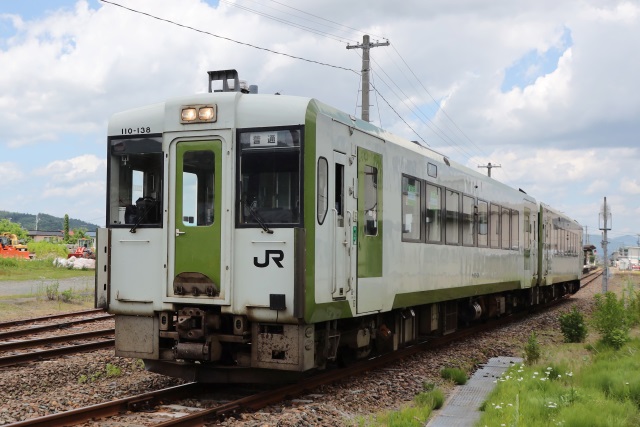It's very hot in Tokyo. The maximum daytime temperature is often over 35 degrees Celsius. This heat is killing me, but the hot summer is still better than the rainy season, because, I can at least go out to observe trains without an umbrella. My destination was JR Freight's Tokyo Freight Terminal, about 10 kilometers south of the city center. Although this terminal is for employees only, we can survey the inside of the railyard from an overpass road. And then, I found an extra rare train.
Please look at the top photo... JR Freight's EMU (Electric Multiple-unit), the M250 series. It's not an electric locomotive, but an EMU. The blue-colored two motorcars can accommodate containers in the center of the vehicles. In addition, many flat-shaped trailers, which are coupled behind the blue-colored motorcars, can also accommodate containers. When we see the overall train, one set is formally composed of two top motorcars, 12 trailers and two last motorcars (4M12T). In the photo below, the trainset is unfortunately taken apart.
The EMU M250 series is commissioned under the name of Super Rail Cargo. It's operated between Tokyo Freight Terminal and Ajikawaguchi station in Osaka Prefecture. Why is it an EMU? The major reason is its speed. In fact, the maximum speed of Super Rail Cargo is 130 kilometers per hour, which is 20 kilometers per hour faster than that of freight trains pulled by locomotives. Super Rail Cargo is exclusively contracted by a transportation company, Sagawa Express.
Please check out my previous post about JR Freight's another terminal in Tokyo as well.





















